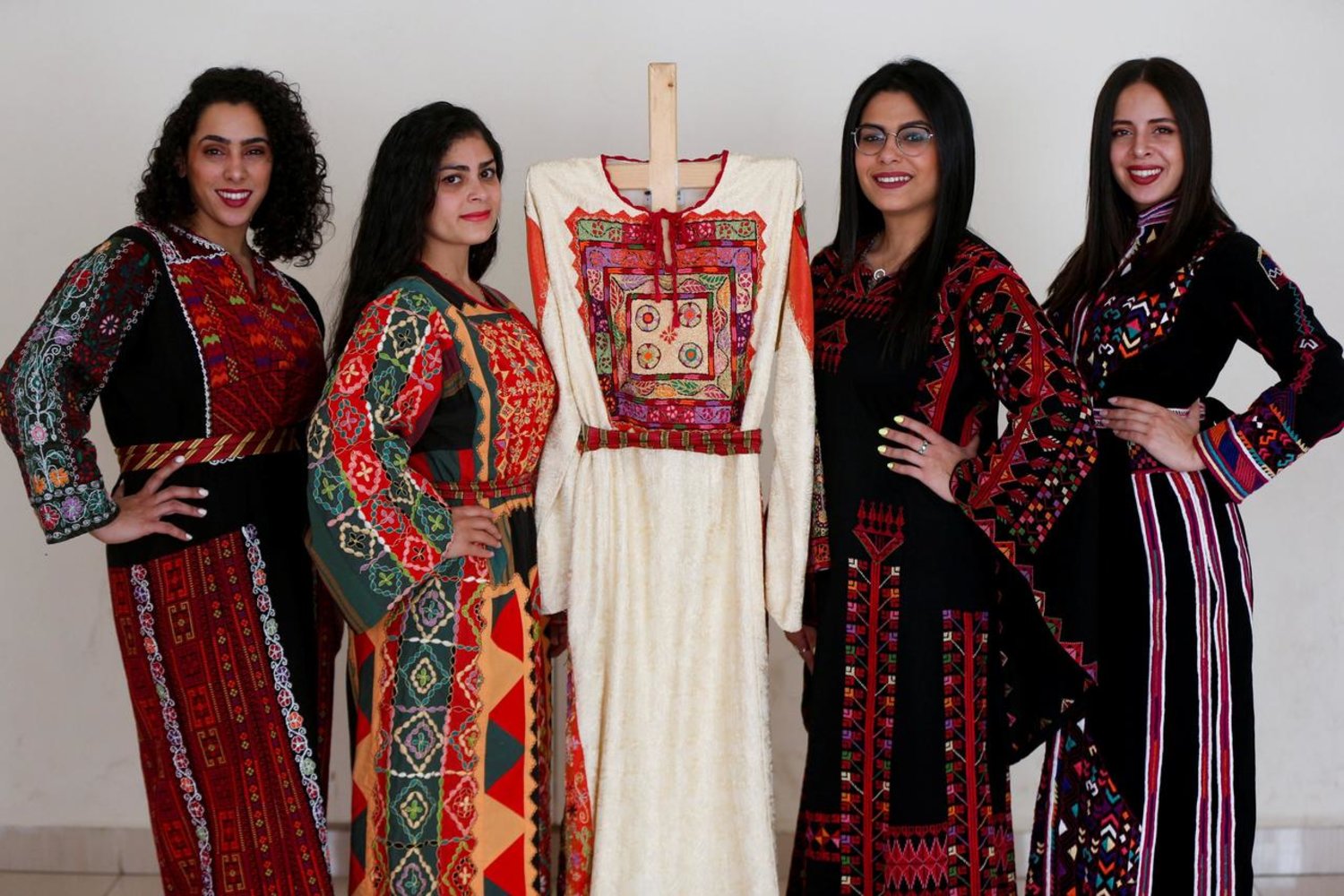Jordan is a country with a rich culture and a long history, and it is distinguished by the diversity of its traditional clothes that reflect the identity and heritage of its people. Jordanian traditional clothing is not only a form of expression but also a symbol of the country's pride and identity. In this article, we will review some of the types of traditional clothes in Jordan and how they evolved over time.
Traditional clothes for men in Jordan
For centuries, Jordanian men across ethnic groups wore versions of the Arabic thawb, consisting of a long robe with sleeves that covered the entire body, called dishdashah or thoub, usually in white cotton. It offers protection from the sun and is well-suited to the hot climate.
Men pair the thawb with a head cover that includes a white cap called thagiyah and a scarf-like head cover that covers the head and shoulders. This is called gutrah or shumag or keffiyeh, depending on the color and pattern. Often checkered black and white, the headdress is wrapped around the head in various styles. It originated as a scarf to shield from sun and sand.
In summer, the dishdashah is made of white cotton to reflect sunlight, while in winter, darker and heavier fabrics are used to keep the wearer warm.
On feet, men wear leather sandals called shat. In colder months, the bisht cloak is worn over the thawb for extra warmth. Smart tan or black wool suits are also popular in modern professional contexts.
Traditional clothes for women in Jordan

Traditional clothes for women in Jordan are quite unique. The most traditional dresses have a long rectangular slit or decorative panel on the front. Women wear handmade embroidered dresses sometimes with a hijab in colors of black and red, with gold accents at times. However, styles vary by region. In northern Jordan, costumes called shirsh are ankle-length with tight long sleeves and embroidered necklines.
Central and southern Jordanian dresses can be double length, with extra long pointed sleeves. These double dresses (thob 'ub) appear to use far more material than possible. Legend says they should be as long as the wearer's living room - the longer the dress, the bigger the home and status. Thob 'ub come in styles like massive winged sleeves used as baskets. Others like the berame have long embroidered panels but smaller sleeves. These were popular among Bedouins, Karak and Salt. They're often worn with a rectangular black or red silk scarf - the 'asbe harir.'
Traditional Outfits by Region
Jordan encompasses different environmental zones, from fertile valleys to harsh deserts. Traditional clothing varies accordingly across regions.
- Amman: As the modern capital and large city, Western clothing dominates day-to-day fashion here. But women don glamorous embroidered kaftans and abayas for special events.
- Madaba & Karak: In southern Jordan, women favor brighter dresses with triangle-patterned stitching. Floppy sun hats are popular.
- Ma'an: The desert climate inspires loose styles like the thawb and abaya as well as voluminous hijabs in dark colors.
- Aqaba: At Jordan's Red Sea coast, lightweight fabrics and loose dresses keep people cool. Men opt for short sleeve thawbs.
- Dead Sea: Mud masks and mineral soaks mean practical bathing suits and beachwear prevail.
- Irbid: In northern Jordan, you'll see the red-and-white keffiyeh, long thawbs, and embroidered black over-dresses.
Embroidery
Embroidery is a cherished traditional Jordanian craft, a source of pride for women. While intricate needlework has seen a revival in high fashion lately, exquisite embroidery has long been integral to authentic Jordanian identity. Elegant gowns and jackets feature traditional stitching combined with rich Middle Eastern textiles as the highlight of many modern collections.
This beautiful artform started in remote villages where young girls embroidered as creative expression and to attract suitors, diligently stitching trousseaus. Brides carefully crafted robes to last lifetimes. Embroidery also adorns cushions, drapes, quilts and more in Jordanian homes.
Vivid colors like red, pink, green, gold and orange create striking patterns using cross-stitch and motifs like flowers, trees, waves and feathers. These natural themes recur in Jordanian embroidery, transporting viewers to an enchanting world reminiscent of One Thousand and One Nights.
Evolution of Fashion in Jordan

In recent decades, Western-style clothing has grown in popularity, especially among youth. Jeans, t-shirts, and suits are commonly worn in cities.
But traditional outfits remain prevalent, used daily and considered proper attire for religious, social, and cultural occasions. Jordanians proudly wear cultural dress to weddings, religious celebrations, festivals, and holidays.
Some take a modern twist on old styles. Thawbs come in pop colors, and headscarves sport stylish patterns. But classical elegance endures in Jordanian fashion.
After learning about Jordan's diverse traditional garments, it's tempting to don your own cultural outfit. But respect traditions by wearing such clothing appropriately. Avoid costumes and caricatures. Appreciate each item's heritage. With an open mind, you can gain insights into Jordanian culture through its enduring traditional fashion.
Let’s discover different types of Jordanian traditional dresses for women in this following video: